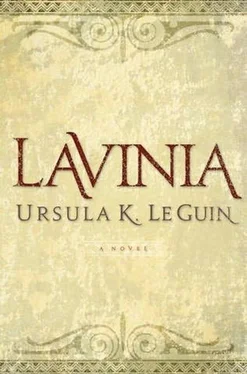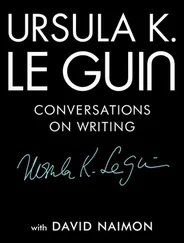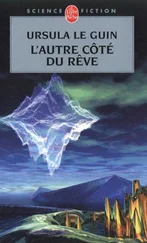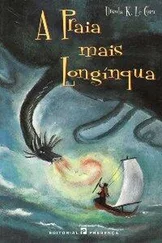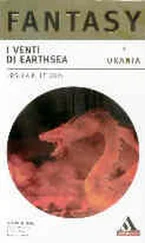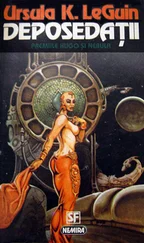Like Vergil, I call the towns of the Bronze Age cities, and their people probably saw them as cities, but to us they might look like a walled or stockaded huddle of huts around a fort. Their people went out into the fields to herd sheep, goats, and cattle, and plant and tend barley and emmer wheat and vegetables, fruit and nut trees. They probably had no cotton or linen yet; the women carded, spun, and wove wool into the togas and pallas they wore (not all that different from a sari). It’s possible that they knew only wild vines and the inedible wild olive, and couldn’t afford to buy wine or olive oil from the Etruscans, who by then may have had them. But I couldn’t imagine Italians without wine and olive oil. If it’s any excuse, neither could Vergil.
I tried to give a glimpse of the countryside as it probably was then: a vast forest of oak and pine cut by steep river gullies running down to swampy grasslands and dune marshes near the coast. Settlements were mostly on rocky outcrops of the great volcanic complex of Mount Alba. The towns and their pastures and pagus fields were a small part of that wilderness. Each was a long way from the others. It would be a long time yet before they drew together to become Rome. People lived then in a wild world, a lonely one.
Vergil exaggerates the sophistication of that world, I play down its primitiveness: both of us, I think, because we want these people to be Romans—at least Romans in the making.
Ever since I first read about it I’ve been drawn to Rome, not the sick, luxurious Empire of the TV sagas, but early Rome: the dark, plain Republic, a forum not of marble but of wood and brick, an austere people with a strong sense of duty, order, and justice: farmers who spent half the year in the army, women who ran the farm meanwhile, extended families whose worship was of the fire in their hearth, the food in their granary, the local spring, the spirits of place and earth. Women were not set apart as chattel, and if only for that reason my imagination can be at home in an ancient Roman household as it cannot be in an ancient Greek one. They had slaves, as every people did then, but the slaves of the household, the familia, sat at table with the free. They were coarse, they were brutal, and they were tremendously different from us, but it is hard to feel them as essentially foreign when so much of our cultural heritage comes directly from them, half our language, most of our concept of law… and perhaps also certain homely but delicate values, such as the loyalty, modesty, and responsibility implicit in Vergil’s idea of a hero.
I am grateful to W. Warde Fowler, author of The Religious Experience of the Roman People, and to H. J. Rose, author of Ancient Roman Religion, whose works, full of information and understanding, exemplify the nobility of scholarship. Bertha Tilly, in Vergil’s Latium, and Alexander G. McKay, in Vergil’s Italy, were invaluable guides. Karen Carr of the Portland State University Department of History shook some of the errors out of my Afterword and is not to blame for any that remain. My brother Karl Kroeber encouraged my reading of the Aeneid as a tragedy, but will probably rightly disown it. I am grateful to my editors Andrea Schulz and Michael Kandel and, as always, to the many people at Harcourt who work with me in so many ways to make a book what it ought to be.
—URSULA K. LE GUIN 2008
Other Harcourt Books by Ursula K. Le Guin
Tales from Earthsea
The Other Wind
The Telling
Changing Planes
Gifts
Voices
Powers
HARCOURT, INC.
Orlando Austin New York San Diego London
Copyright © 2008 by Ursula K. Le Guin
All rights reserved. No part of this publication may be reproduced or transmitted in any form or by any means, electronic or mechanical, including photocopy, recording, or any information storage and retrieval system, without permission in writing from the publisher.
Requests for permission to make copies of any part of the work should be submitted online at www.harcourt.com/contactor mailed to the following address:
Permissions Department, Houghton Mifflin
Harcourt Publishing Company, 6277 Sea Harbor
Drive, Orlando, Florida 32887-6777.
www.HarcourtBooks.com
This book is printed on FSC (Forest Stewardship Council)—certified stock.
Mixed Sources
Product group from well-managed forests, controlled sources and recycled wood or fiber
www.fsc.orgCert no. SCS-COC-00648
©1996 Forest Stewardship Council
Library of Congress Cataloging-in-Publication Data
Le Guin, Ursula K., 1929—
Lavinia/Ursula K. Le Guin.—1st ed.
p. cm.
1. Aeneas (Legendary character)—Marriage—Fiction. 2. Rome (Italy)—History—To 476—Fiction. 3. Legends—Rome—Fiction. I. Title.
PS3562.E42L38 2008
813’.54—dc22 2007026508
ISBN 978-0-15-101424-8
Text set in Centaur MT
Map illustration by Jeffery C. Mathison
Designed by Linda Lockowitz
Printed in the United States of America
First edition
A C E G I K J H F D B
